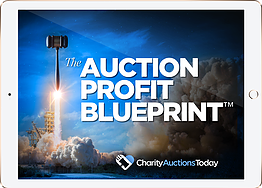DOWNLOAD The Auction Profit Blueprint
The 4 tools BIG organizations use every time to skyrocket auction profits!
The Step-By-Step Guide to stop leaving thousands on the table.
Learn how to create an awareness campaign for your nonprofit. CharityAuctionsToday has the tips you need to build awareness of your organization.

Perhaps you’re a new nonprofit and you’re trying to get the word out about your mission. Or maybe your cause has been around for a while, but you feel you need to revive interest. An awareness campaign can help you reach new donors, volunteers, potential sponsors, and more.
Awareness campaigns are a marketing strategy aimed at increasing brand recognition and promoting a specific initiative or cause. We’ll show you how to create a smart awareness campaign that will help boost your visibility and promote your nonprofit’s brand.
Nonprofits rely heavily on community support and donations to carry out their work. You can’t achieve your goals without the support of donors, volunteers, and often, local leaders and officials.
Without proper awareness and visibility among these populations, it can be challenging to attract donors, sponsors, and volunteers. This is where awareness campaigns can help get the word out about your cause.
Awareness campaigns are an effective way for nonprofits to reach their target audience and engage with their local community. By creating a buzz around their cause, nonprofits can attract new supporters, volunteers, and donors.
This can help create a sense of community and belonging. When people see your brand, they recognize it and feel proud that your efforts help their home. Additionally, raising awareness can bring in more funds.
Nonprofit branding is essential for establishing a strong identity and building trust with the community. Awareness campaigns provide an opportunity for nonprofits to showcase their brand and values to a wider audience. By creating a consistent and impactful campaign, nonprofits can establish themselves as a reputable and trustworthy organization, which can lead to increased support and donations.
One of the biggest challenges for nonprofits is getting their message heard and understood by the public. Awareness campaigns help nonprofits to educate the community about their cause and the impact they are making. By creating awareness, nonprofits can inspire people to take action and support their cause, whether it’s through donations, volunteering, or spreading the word.
Now that we understand the importance of an awareness campaign let’s discuss how to create one that will effectively promote your brand and increase online visibility.
The first step in creating an awareness campaign is to define your goals and target audience. What do you want to achieve with this campaign? Who is your target audience? Understanding these key factors will help you create a more targeted and effective campaign.
Goal Setting
The obvious goal of an awareness campaign is to raise awareness. But how will you measure that? Here are some ideas on metrics that will help you see if your campaign has succeeded:
SEO KPIs (Key Performance Indicators):
Social KPIs:
Email KPIs:
Traditional KPIs:

Target Audience
Ask yourself who is most likely to be interested in your mission? Research different populations to find people who will support your cause. Ask some questions about your current donor base as well as who you’re trying to reach:
Awareness campaigns can be particularly effective when run alongside broader events. For example, if your nonprofit aims to support mental health you might launch your campaign during Mental Health Awareness Month in May. There are themed months, holidays, and other events that you could use to spread awareness of your work.
Even if you don’t sync your timeline to one of these themes or holidays, you will need to decide how long your campaign will run. Give yourself enough time to plan all your associated activities and events. Consider kicking off and closing out your awareness campaign with events. This will help attract attention and recognize the people who worked hard to spread the message about your mission.
What do you want people to learn, see, or do when they see your message? Do you want them to donate immediately? Share your content? Take part in a challenge or (hopefully) viral trend? Decide on what sets this awareness campaign apart from your regular posts, emails, and other messaging.
The success of your awareness campaign relies heavily on the content you create. Your content should be engaging, informative, and visually appealing. Use images, videos, and infographics to make your content more eye-catching and shareable. The point of an awareness campaign is to reach more people, so create content that is interesting and shareable.
Your awareness campaign will need a budget to truly expand your reach. This isn’t just more time and resources to run an online campaign that you hope goes viral: your awareness campaign should also include at least one event and perhaps even ads.
Sponsors can help you meet that budget head on. Whether you reach out to local small businesses or large corporations, you should allow enough lead time before your campaign kicks off to secure sponsors. Make sure you explain how these sponsors’ businesses and brands will also benefit from your expanded reach.
To stick with your awareness campaign you need to have a detailed plan for every channel it will run on. Emails, social posts, video creation, snail mail, phone calls, and your website should all be aligned in preparation for your campaign.
Have the timing of your announcement messaging, follow ups, and your wrap-up communications nailed down. Know what assets you need ahead of time and what can be made during the campaign.
Make sure that website visitors and search engines can find your awareness campaign pages. Don’t create a whole new website for your campaign. Instead, use your established, authoritative domain to help the page appear on search engine results pages. Similarly, ensure that your donation page or button is clearly visible on your website.

Technology has made it easier than ever for nonprofits to create and manage awareness campaigns. There are various tools and platforms available that can help you streamline your campaign and reach your goals. For example, you can use crowdfunding or peer-to-peer fundraising platforms to raise funds, email marketing tools to reach out to donors, and project management software to keep track of your campaign’s progress.
Let’s take a look at some real-world examples of successful nonprofit awareness campaigns.
#GivingTuesday is a global movement that encourages people to give back to their communities and support nonprofits. This campaign takes place on the Tuesday after Thanksgiving and has become a popular way for nonprofits to raise funds and awareness. Started by the 92nd Street Y and the United Nations Foundation in 2012, In 2021, #GivingTuesday was responsible for $2.7 billion moved in the US alone.
Ice Bucket Challenge
The Ice Bucket Challenge was a viral campaign that took the world by storm in 2014. The campaign aimed to raise awareness and funds for amyotrophic lateral sclerosis (ALS) research. Participants were challenged to pour a bucket of ice water over their heads and donate to the ALS Association. The campaign went viral on social media, with celebrities and public figures taking part, and raised over $220 million worldwide for ALS research.
Movember is an annual campaign that takes place in November and aims to raise awareness and funds for men’s health issues, such as prostate cancer, testicular cancer, and mental health. Participants grow mustaches during the month and raise funds by seeking donations from friends and family. The campaign has been successful in raising awareness and funds, with over $837 million raised since its inception in 2004.
An awareness campaign is a powerful tool for increasing brand recognition and promoting your brand’s message or cause. By defining your goals, sticking to your timeline, setting your message, securing sponsors, crafting a multichannel plan, and leveraging technology, you can create an effective campaign that will boost your online visibility and promote your cause. Remember to track and analyze your results to make any necessary adjustments and ensure the success of your campaign.
DOWNLOAD The Auction Profit Blueprint
The 4 tools BIG organizations use every time to skyrocket auction profits!
The Step-By-Step Guide to stop leaving thousands on the table.

